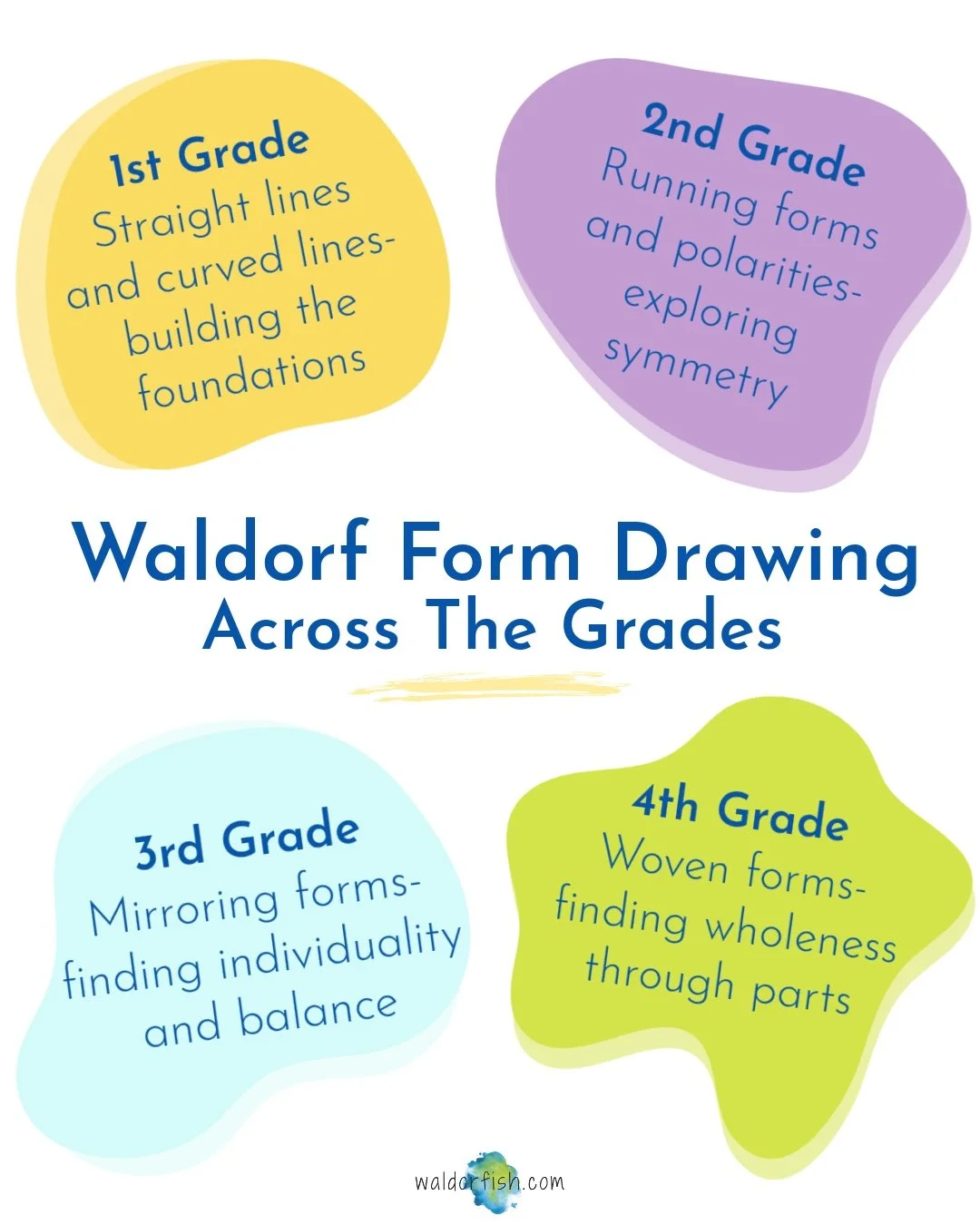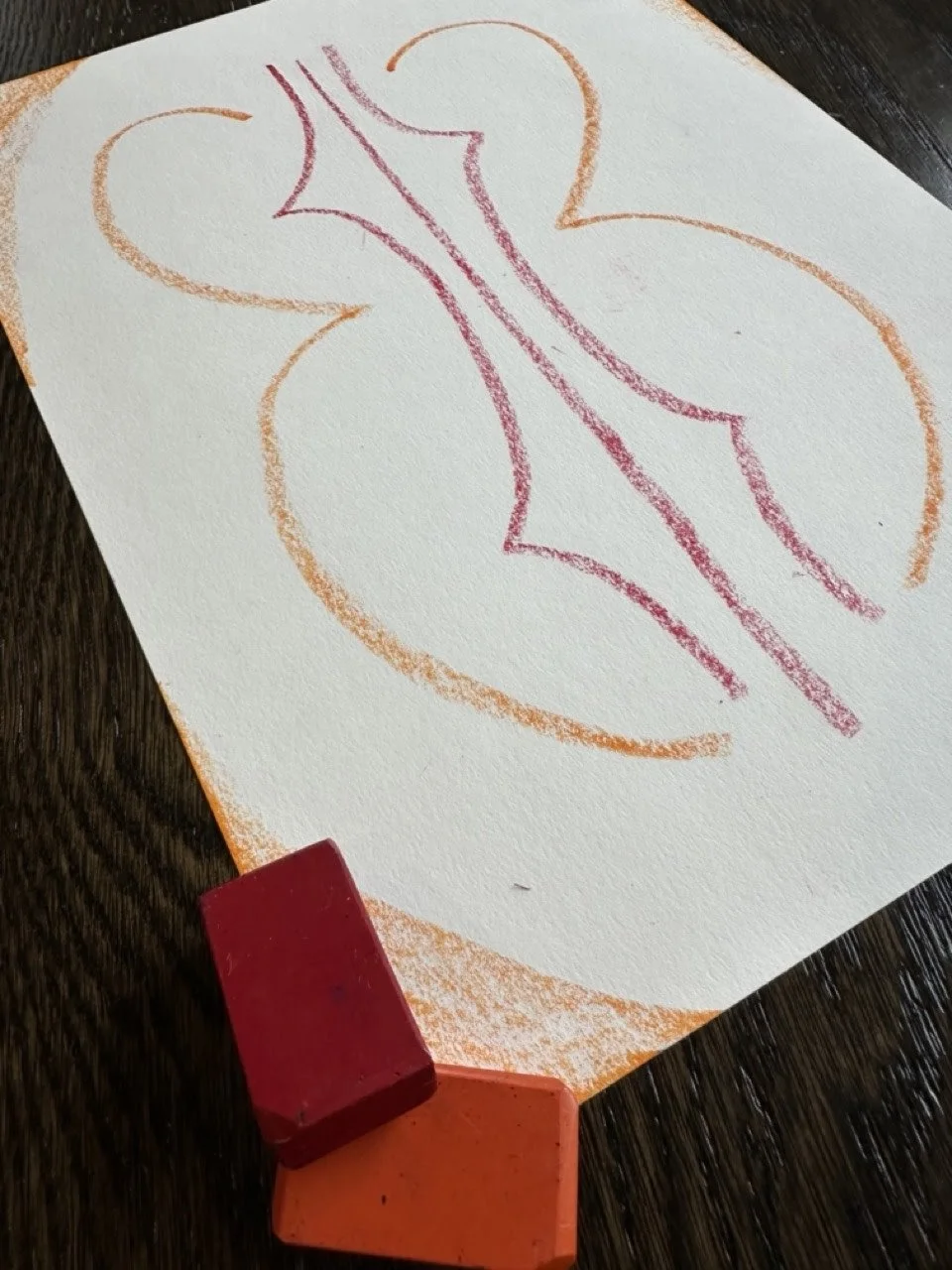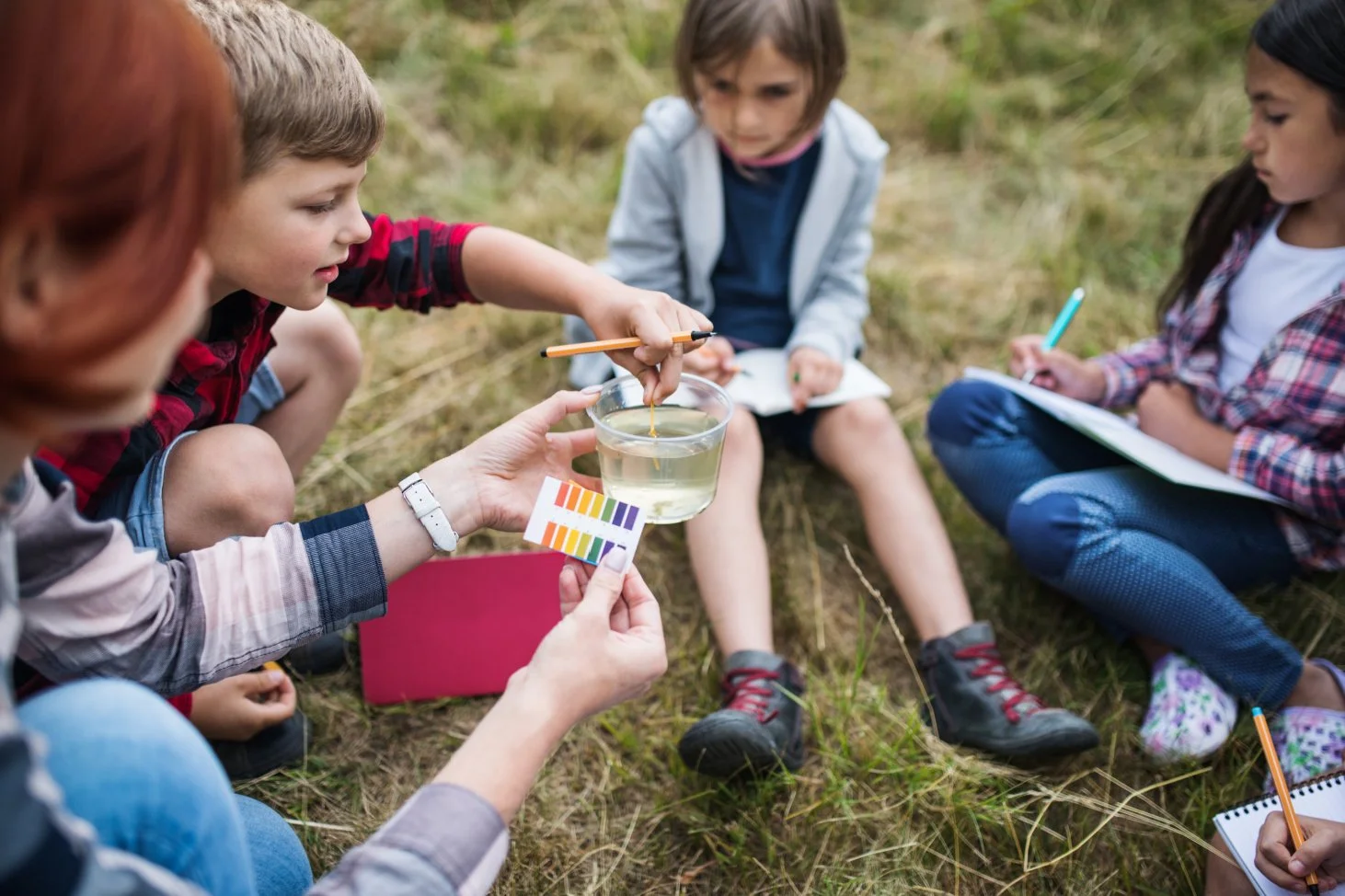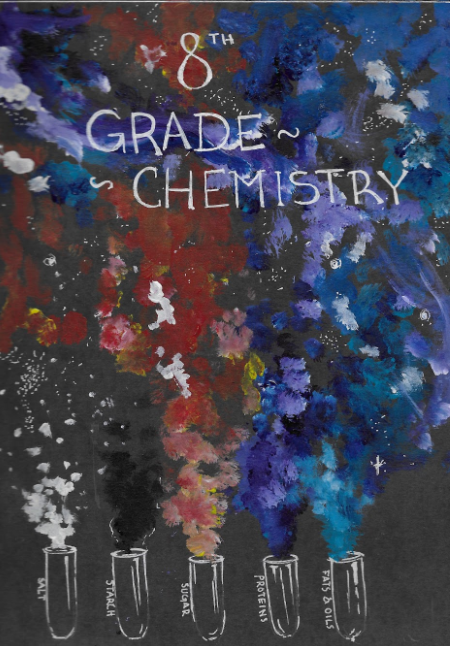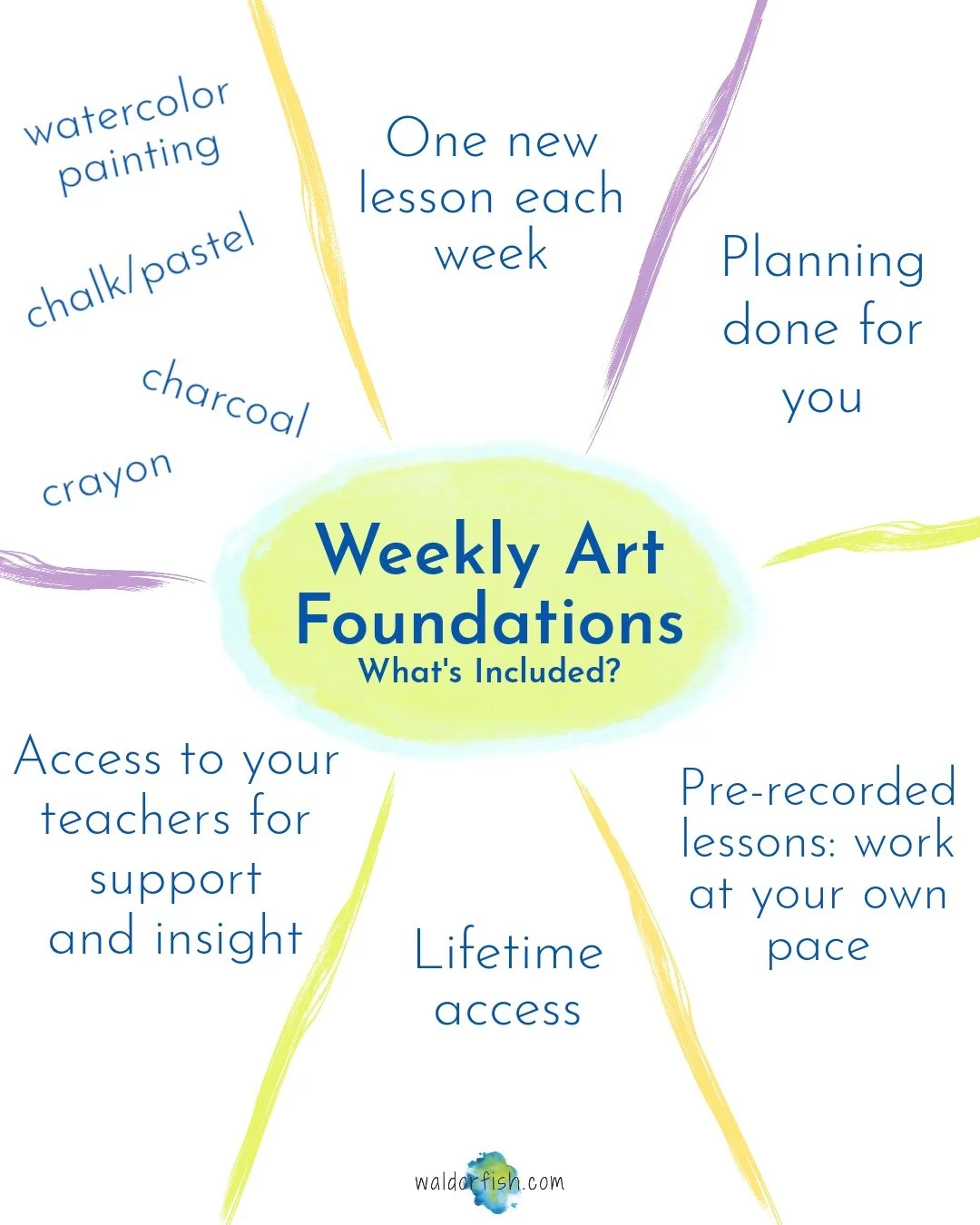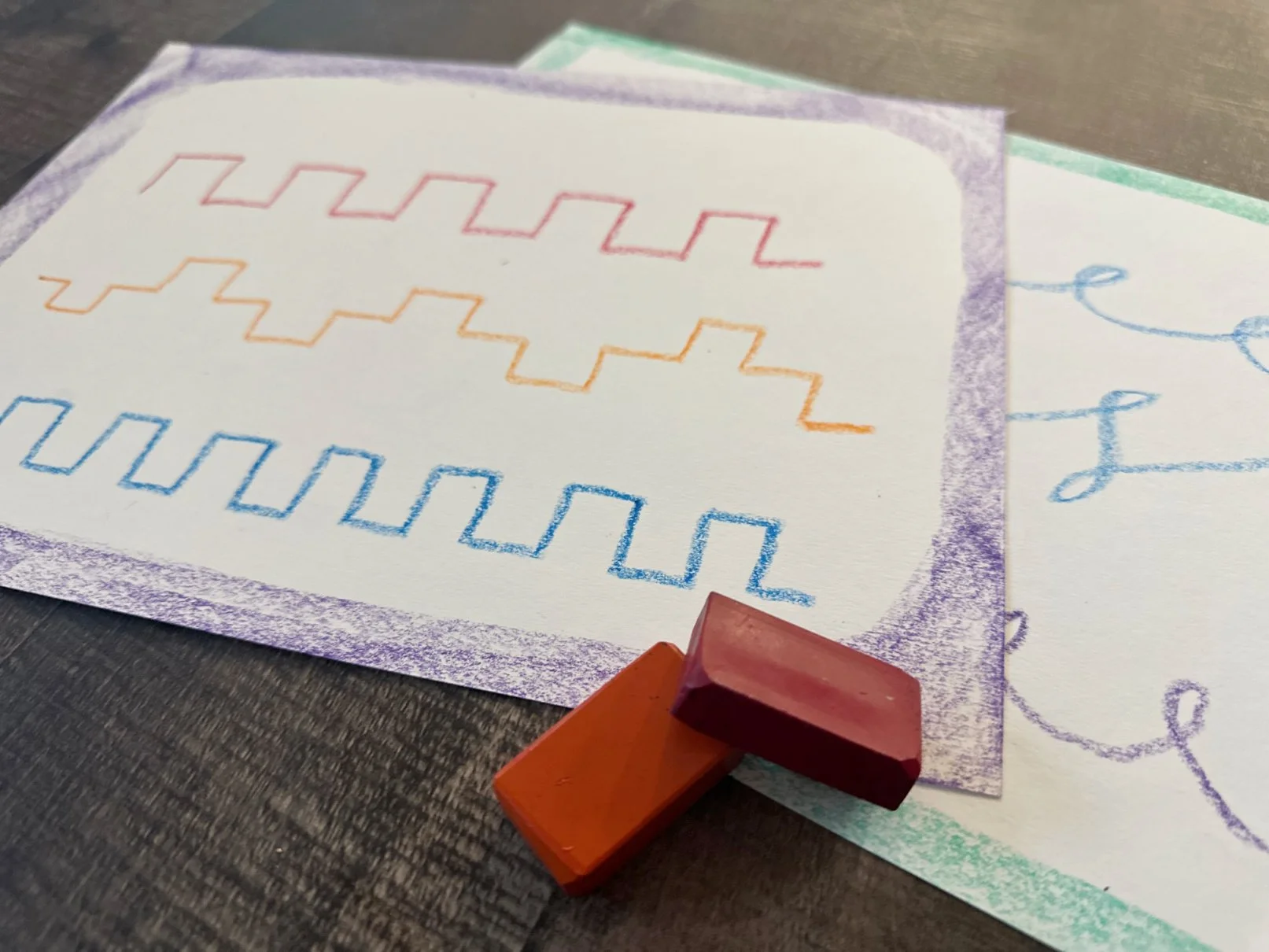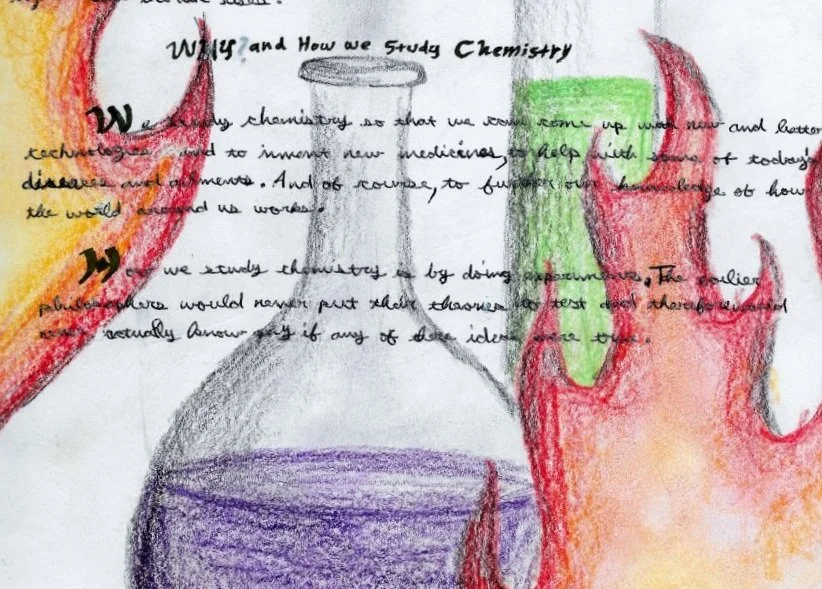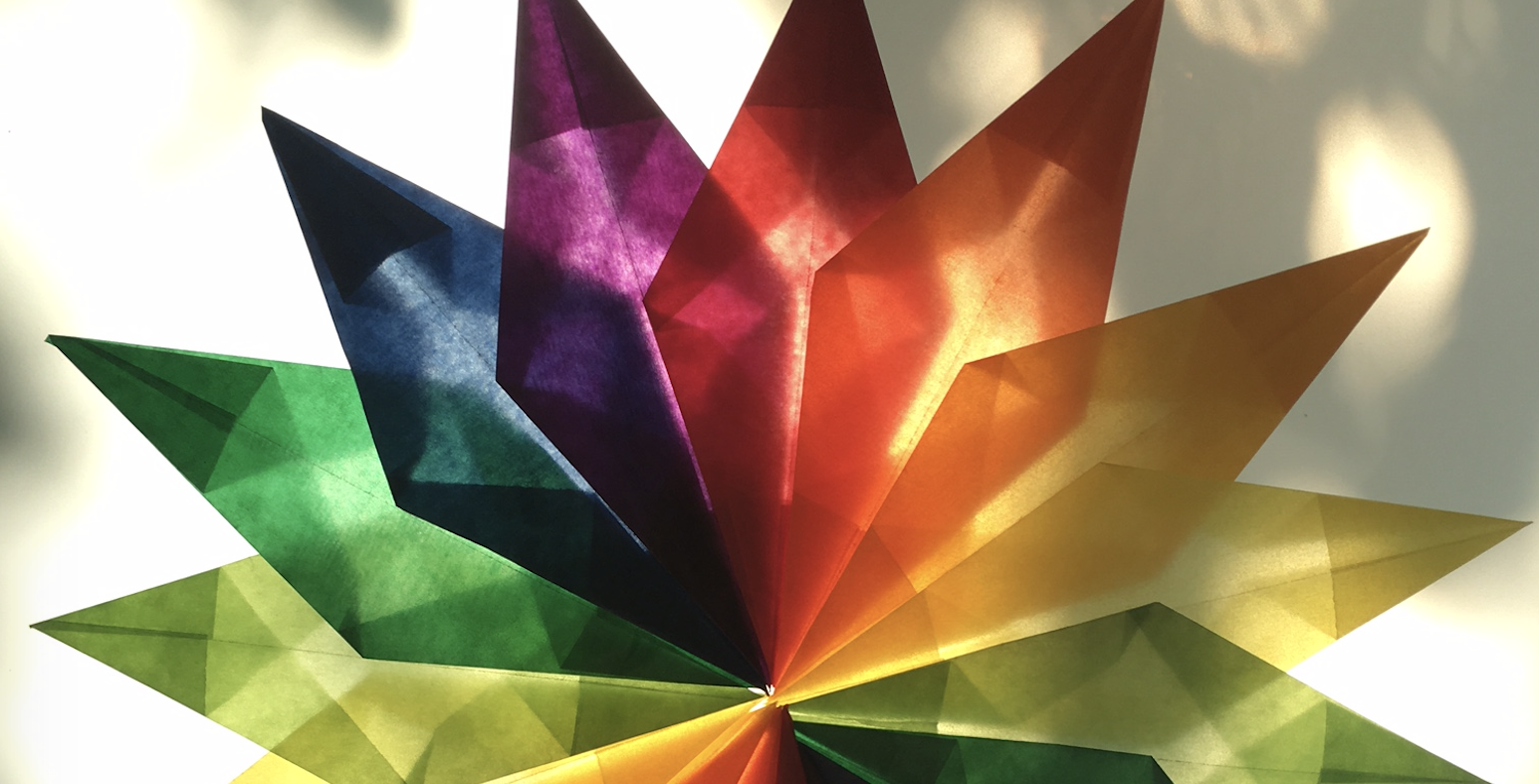
Waldorfish Blog
Waldorf Form Drawing: How the Forms Progress Through Grades 1-4
Waldorf form drawing curriculum progresses across the grades, and evolves to meet the growing child in their development.
So, how do the forms change from first through fourth grade?
In first grade, the curriculum starts at the beginning! First graders begin their journey by exploring the most basic, yet universal forms in our world: straight lines and curved lines. From drawing curves in the playground sandbox with their feet, to drawing straight lines on the chalkboard with colorful chalk, the first grader begins to explore the foundations of their surroundings through form drawing.
With form drawing, practice is far more important than the result!
The second grader is entering a new realm of development, and is ready to explore polarities: darkness and light, the heavens and earth, good and evil. They are beginning to notice balance, or lack thereof, and are growing in their ability to draw and create. The form drawing curriculum includes the practice of drawing running forms, such as a wave drawn over and over again, as the child strives to keep the shape symmetrical, the same size, and balanced. These forms themselves reflect the polarities of shapes as well; strong, straight lines, or curved, circular forms, the second grader’s form drawing curriculum emphasizes finding balance and symmetry.
In Waldorf form drawing, the forms are designed to meet the inner needs and experiences of the growing child!
Third grade marks a great change in the child, as they are beginning to see themselves as separate from the group; they are finding their individuality, which can be an exciting and isolating experience all at once! Hence, the third grade form drawing curriculum works with mirror forms. These are more complex, and require more abstract thought than ever before. At this stage, it isn’t about copying the form, but instead, transforming it to a whole different point of view. Through this process, the third grader is encouraged to appreciate the form in its original state, and then make it their own through the process of form drawing.
Fourth grade is the final year of form drawing curriculum before students formally enter the world of geometry. A fourth grader is ready to conquer more complicated and abstract subjects; they are ready to see things not just as a “whole” but also for their individual “parts.” This year marks the culmination of all the skills they have cultivated thus far in form drawing- symmetry, mirroring, running forms, the use of straight and curved lines to create a whole form.
An example of a mirror form- the center line serves as the “mirror”!
As well, exploring fractions is a focus of the fourth grade math curriculum and Norse myths are told throughout much of the school year. With that, the form drawing curriculum becomes more intricate and challenging. Fourth graders are asked to apply all their skills through drawing elaborate forms such as knots and woven forms, where the lines criss-cross, go under and over each other, all while keeping the balance and symmetry intact. Through this process, the form is a whole with its own parts; the fourth grader is able to see and appreciate the form in all its beauty, simplicity, and complexity.
Waldorf form drawing curriculum evolves with a child's growth from first to fourth grade. Starting with basic lines, students progress through exploring polarities, mirror forms, and finally, complex woven forms in fourth grade.
This journey not only hones artistic skills but fosters a deep appreciation for balance, symmetry, and individual creativity.
About the Authors
Robyn Beaufoy is Waldorfish’s CEO, and also a course instructor for Simple Season (coming soon!), Waldorf Art for Beginners, and Weekly Art Foundations. You’ll find her intuitive touches and influences throughout everything Waldorfish offers. Robyn has been in the world of education for over 25 years, with an MA in Education and a certification in Waldorf teaching - she also homeschooled both of her children for some of that time. In 2012 Robyn co-founded Waldorfish.com, creating it with the vision of making Waldorf inspired-art and pedagogy more accessible, joyful, and doable for homeschoolers all over the world.
Caitlin Amajor is Waldorfish’s course instructor for Geometry grades 5 & 6, and Botany, as well as our Administrative Assistant. From a young age, Caitlin has been immersed in Waldorf education, attending a Waldorf school from K-8. After receiving a BA in History, Caitlin gained her certification in Waldorf teaching, and spent seven years as a Waldorf class teacher in the upper grades. With a special fondness for watercolor painting and geometry, Caitlin loves bringing Waldorf education to her students all over the world, and seeing their own individuality and style bloom from the curriculum!
3 Tips: Teaching Waldorf Science Curriculum
Science is woven into Waldorf curriculum from the very start of first grade. Formal science curriculum in Waldorf education begins in sixth grade, and opens a brand new world for the students, and also for the educator.
Waldorf science is taught using a phenomenological approach, which emphasizes the direct observation and exploration of the natural world through one’s senses. For the educator, teaching science curriculum includes in-class demonstrations, hands-on experiments, and an engagement of the senses through real life experiences.
Science comes to life through doing and observing.
Science curriculum can often be enjoyed anywhere, especially in nature!
The educator’s role when teaching science is to create opportunities for the student to observe and experience phenomena of the natural world, and eventually, discover the laws of the natural world that exist all around us.
Luckily, the phenomenological method provides a structure that supports the educator; truly, with a little preparation, the natural world provides everything the child needs to deepen their understanding and connection to the scientific world!
How can the educator approach teaching science curriculum?
How can they best prepare and structure instruction time to make the most of the demonstrations?
How can the educator inspire their students to use their observation skills to make conclusions about the natural laws of science?
We’ve got three tips…
1. Prep and Practice
Teaching science requires a lot of supplies- more so than probably any other subject in Waldorf education! Depending on the scientific subject, one may need candles, a blow torch, organic material, baking supplies and ingredients, room darkening materials, and so on.
Teaching Waldorf science can be fun and meaningful, for the student and educator alike!
Luckily, nearly all of the supplies needed for Waldorf science are easily accessible; most are readily available at your local hardware stores, online shopping, or even in your own house and pantry! Getting it all together requires just a little planning and organization.
All of these supplies can become a distraction to the students (it’s new and exciting! Who can blame them?!) so the goal is to have the “stuff” be the secondary focus- we want what the stuff is doing to be the focus!
Therefore, its most ideal if the educator can prep and practice the demonstrations BEFORE doing it in front of the students.
Now, we’re the first to say- this may sound like a lot!
But a well practiced, hands-on demonstration will ensure the focus is on the scientific law being shown, and the distraction of the supplies will simply fade away.
Our Physics (grade 6-8) and Chemistry (grades 7-8) courses are built for the educator: they are designed for you to learn HOW to present science in a phenomenological way, from start to finish.
Our instructor, Ari Magruder, taps into her decades in the classroom and prepares you for possible difficulties you may encounter in the demonstrations. Practicing ahead of time gives you time to make adjustments, and ultimately, gives you the practice you need to gain confidence!
Our courses not only give you detailed supply lists (everything you need!) for the full curriculum, but also show you how to do each and every experiment, along with discussion questions, review activities, and more.
2. Show, Don’t Tell
As educators, we are used to using our voices to teach- storytelling, explaining, presenting lectures, and more!
But when it comes to teaching science, it’s important that the educator allows the student to build their own skills in observing an experiment or demonstration.
Motors are explored in Waldorf eighth grade science curriculum- from the “whole” to the “parts”, and back again!
For example, when an educator is demonstrating how various organic materials burn (usually found in grade 7 chemistry), it’s important to allow the process to unfold in front of the student, without commentary or explanation from the educator (or other students for that matter!)
We want the students to notice the smells of different materials burning, to see which ones burn faster than others, and so on- we want their senses to light up!
The educator should allow the students to be fully engrossed in what is happening in front of them, and not break the spell by talking too much.
A simple narration of, “I have these materials in this fire-safe basin, and I am now going to use this match to light them…” is enough; the students can use their own observations from there.
3. Guide, Don’t Give
After a demonstration has been conducted, the educator should guide the student to reaching a conclusion, and not simply hand them the explanation for what the demonstration showed.
We want the student to use their observations to reach the conclusion on their own!
A vibrant example of a science main lesson book page; art and science working together!
For example, after a student has observed the demonstration which shows the conductivity of various metals (found in the sixth grade physics curriculum) the educator and students can discuss the process, and the cause and effect of what was observed.
Again, the educator is the guide here- they are not giving any explanation of the “whys” of the experiment, but allowing the student to reach the “why” on their own.
The educator can ask questions to guide the conversation…
“What did the experiment look like set-up, before we began? What did I do first to begin the experiment? What did you notice first? Did you see/smell/hear something? What does that observation tell you? Why?”
Giving away a conclusion does not engage the students’ senses or observation skills, therefore, we must guide them instead!
As always in Waldorf education, nature serves as a boundless source of inspiration, and when we teach through phenomenology, we allow nature to be the true teacher of scientific law. Educators play an important role in fostering their students’ observational skills and developing a connection to nature, especially with some preparation and practice, intentional communication, and pointed guidance.
About the Authors
Robyn Beaufoy is Waldorfish’s CEO, and a course instructor. You’ll find her intuitive touches and influences throughout everything Waldorfish offers! Robyn has been in the world of education for over 25 years, with an MA in Education and a certification in Waldorf teaching - she also homeschooled both of her children. In 2012 Robyn co-founded Waldorfish.com, creating it with the vision of making Waldorf inspired-art and pedagogy more accessible, joyful, and doable for homeschoolers all over the world.
Caitlin Amajor is Waldorfish’s course instructor for Geometry grades 5 & 6, and Botany, as well as our Administrative Assistant. From a young age, Caitlin has been immersed in Waldorf education, attending a Waldorf school from K-8. After receiving a BA in History, Caitlin gained her certification in Waldorf teaching, and spent seven years as a Waldorf class teacher in the upper grades. With a special fondness for watercolor painting and geometry, Caitlin loves bringing Waldorf education to her students all over the world, and seeing their own individuality and style bloom from the curriculum!
What is Weekly Art Foundations?
Q: What is Weekly Art Foundations, the art course you offer on Waldorfish.com?
Weekly Art Foundations is a fully online course designed for homeschooling families, children, and also adult educators seeking training in the arts.
Providing weekly lessons in watercolor painting, crayon and pencil drawing, chalk work, (and more!), this course provides enough lessons for an entire school year- all with instructor support and lifetime access.
This watercolor landscape is one of the 34 lessons from Weekly Art Foundations!
The instructors of the WAF program are experienced Waldorf teachers and home educators, Brian Wolfe and Robyn Beaufoy. They have both been involved in art & education for over 25 years.
They share a LOVE of helping adults and children shift mindsets from one focused on comparison and the final product, to one focused on the JOY of the journey!
Q: Who is Weekly Art Foundations for?
A: Weekly Art Foundations is a step-by-step program for diving into Waldorf art in a meaningful way. It’s perfect for homeschoolers, adults and children ages 7 years and up.
This program is for those who want to learn about, enjoy and experience Waldorf inspired-art.
No previous Waldorf experience is required! WAF is more about a way of teaching (and learning) art than it is about following a specific educational pedagogy.
Robyn was a public school teacher before she was a Waldorf teacher .... she and our other course instructor, Brian Wolfe, incorporate the best practices from everything they’ve encountered in their careers.
Q: I’m an at-home educator, how will this course help me?
A: This course will help you buy back some *time by providing you with complete lessons, materials lists, and a forum for discussion and support.
Typically, when a family is looking at purchasing the WAF course, some or all of the following things are true for them:
How can Weekly Art Foundations help you in your homeschooling journey?
They have purchased art supplies, but then feel too overwhelmed, and hesitant to use them.
They want to make art a part of their child’s rhythm, but don’t know how, or where, to start.
They are already doing The Most, and adding art into the schedule feels like just one.more.thing. to figure out.
The child (or even the adult!) struggles with “comparison syndrome,” and needs help shifting their mindset around the creative process.
Weekly Art Foundations was built to address all of this!
Our course includes a master supply list, and in-depth, step-by-step instructions on how to set up, and use your art supplies. You’ll only buy what you need, and use it all!
All of the planning is done for you. No need to think about what your lesson will be and what supplies you’ll need- we’ve got that covered for you.
We’re here to support you throughout the full course, whenever you need us! Support is available via email and in the lesson discussion areas. You won’t be in this alone.
You’ll receive training in our “Art Show” method - a toolkit for keeping everyone focused on the process and fun.
Crayon and figure drawing- all explored in a single lesson!
Q: What kind of art is included in the course?
A: Weekly Art Foundations is perfect for those looking to become familiar with common Waldorf art mediums, and for those who love variety!
Instead of focusing on just one artistic skill, the course will expose you to many. WAF includes lessons in watercolor painting, crayon drawings, chalk work, charcoal lessons, and pencil drawings.
Q: How many lessons are included, and how long do I have access to them?
A: The course includes 34, pre-recorded lessons (plus one bonus lesson!) Lessons are delivered once per week, and can be accessed at any time. Feel free to pause, rewind, and take as much time as you need to complete the lessons.
Upon completion of your payment method, this course comes with lifetime access. You can circle back to the lessons as often as you want to, over multiple school years (and yes, with multiple children!)
Q: My child has never taken online art lessons, how do I know if they’ll like it?
A: The best way to answer this question is for you to try our Free Sample Lesson. This full-length lesson is pulled directly from the course, and will give you a great idea of how things are paced, how your child interacts with it and the instructor’s style.
As the at-home educator, you can take the lessons on your own, in tandem with your child, or have your child take the lessons independently.
Q: When can I enroll?
A: Weekly Art Foundations is open for enrollment twice a year- usually for one week in the fall, and for one week in the winter.
Our next enrollment period begins on July 21st, 2025.
Q: My child attends a charter school, can I use those funds to purchase this course?
A: Yes! We work with a wide variety of schools. Some send us Purchase Orders, and others order directly from our website on behalf of their students.
Please ask your teacher about the process they would like you to use once you identify a course of ours that you would like to purchase. If you are reimbursed by your school after purchasing curriculum out-of-pocket, we are happy to provide you with a more detailed receipt.
Q: Where can I learn more?
A: Click here to view student work, find more FAQ’s, and additional details about the course. As well, feel free to send us a message by clicking here - we’re happy to help!
Weekly Art Foundations is a course designed for families, homeschooling students, the growing artist, the teacher who desires more confidence in their artistic skills, and those who are looking to explore Waldorf-inspired art curriculum.
We’re ready to give you all the support, inspiration, and structure you need to get started.
It would be an honor to be a part of your art class this year!
About the Authors
Robyn Beaufoy is Waldorfish’s CEO, and a course instructor for Weekly Art Foundations, Waldorf Art for Beginners, and Simple Season. You’ll find her intuitive touches and influences throughout everything Waldorfish offers! Robyn has been in the world of education for over 25 years, with an MA in Education and a certification in Waldorf teaching - she also homeschooled both of her children. In 2012 Robyn co-founded Waldorfish.com, creating it with the vision of making Waldorf inspired-art and pedagogy more accessible, joyful, and doable to homeschoolers all over the world.
Caitlin Amajor is Waldorfish’s course instructor for Geometry grades 5 & 6, and Botany, as well as our Administrative Assistant. From a young age, Caitlin has been immersed in Waldorf education, attending a Waldorf school from K-8. After receiving a BA in History, Caitlin gained her certification in Waldorf teaching, and spent seven years as a Waldorf class teacher in the upper grades. With a special fondness for watercolor painting and geometry, Caitlin loves bringing Waldorf education to her students all over the world, and seeing their own individuality and style bloom from the curriculum!
Waldorf Geometry: Why Do We Wait Until Sixth Grade to Introduce Tools?
Q: Why does Waldorf Geometry wait until grade six to introduce the compass and straightedge?
(This post is part of a series in which we answer the most common questions we receive in our inbox re: homeschooling, Waldorf curriculum/pedagogy, and whatever else comes our way! Click here to read more from the series!)
A: Waldorf education approaches geometry differently than other pedagogies, especially when it comes to the progression of how the material is presented and explored.
One of the primary ways that Waldorf geometry curriculum sets itself apart from other methods, is in the fact that we wait to introduce the compass and straightedge until the sixth grade.
Why? It all goes back to where the child is in their development!
Though simple, geometry tools help to create intricate, varied forms!
To explore sixth grade geometry, we first need to take a step back to fifth grade. The fifth grader is in a very special place in their development. They are experiencing a time of true balance in their physical body, and are still connected with the more mystical and magical aspects of the natural world, while beginning to explore the realities of the world in which they live.
Fifth grade geometry is designed to meet the child right where they’re at in this unique phase of development.
The geometry curriculum is explored using only freehand techniques, (no tools quite yet!) which allows the student to utilize their sense of balance, symmetry and appreciation of beauty all through the lens of geometry. Working freehand allows the child to truly connect on a deep, soul level with the forms; their ability to draw, create, and apply their skills in geometry comes only from within, independent of outside influence or assistance.
When a student enters into sixth grade, everything is beginning to change. They are entering puberty, meaning their emotional and physical being is in flux, and they are often ready for new and more challenging ways to learn.
It’s the perfect time to bring tools into the geometry curriculum: a straightedge for the lines, and a compass for the arcs!
A geometry form in progress- all created with a compass and straightedge!
The sixth grader craves a new way of learning, a different way of being challenged, and is looking for order in the new chaos they are experiencing inwardly. The geometric tools provide this experience in deeply impacting and meaningful ways.
With the compass and straightedge, the sixth grader is able to create forms that are precise, orderly, and follow a certain set of rules that are true not only on their paper, but in the whole of the natural world. They have explored these rules in fifth grade, but in a more artistic, free way, and now, they are ready to add in the tools to find a new, more precise perspective on geometry.
Because the student has already explored geometry in fifth grade, the sixth grader does not rely on the tools, instead, tools are used as a way to deepen and enhance their understanding of the vast world of geometry.
As the student is changing, so too must the curriculum, and sixth grade is the perfect time to bring in the addition of tools to geometry. The compass and straightedge, though seemingly simple, provide a vehicle for the student to further their exploration into geometry, and therefore, their exploration into the whole world- mathematics, biology, chemistry, art history - geometry is truly found in everything!
More of your questions answered below!
About the Authors
Robyn Beaufoy is Waldorfish’s CEO, and also a course instructor for Simple Season (coming soon!), Waldorf Art for Beginners, and Weekly Art Foundations. You’ll find her intuitive touches and influences throughout everything Waldorfish offers. Robyn has been in the world of education for over 25 years, with an MA in Education and a certification in Waldorf teaching - she also homeschooled both of her children for some of that time. In 2012 Robyn co-founded Waldorfish.com, creating it with the vision of making Waldorf inspired-art and pedagogy more accessible, joyful, and doable for homeschoolers all over the world.
Caitlin Amajor is Waldorfish’s course instructor for Geometry grades 5 & 6, and Botany, as well as our Administrative Assistant. From a young age, Caitlin has been immersed in Waldorf education, attending a Waldorf school from K-8. After receiving a BA in History, Caitlin gained her certification in Waldorf teaching, and spent seven years as a Waldorf class teacher in the upper grades. With a special fondness for watercolor painting and geometry, Caitlin loves bringing Waldorf education to her students all over the world, and seeing their own individuality and style bloom from the curriculum!
Looking for something?
Welcome to Waldorfish! We started this adventure in 2012 out of a desire to make Waldorf training more accessible to class teachers in remote locations and to homeschooling families everywhere! Read more, click here.
WE WON! Our Weekly Art courses were voted “best interactive art program.” Learn more about the award, here.
A few of our most popular blog posts:


